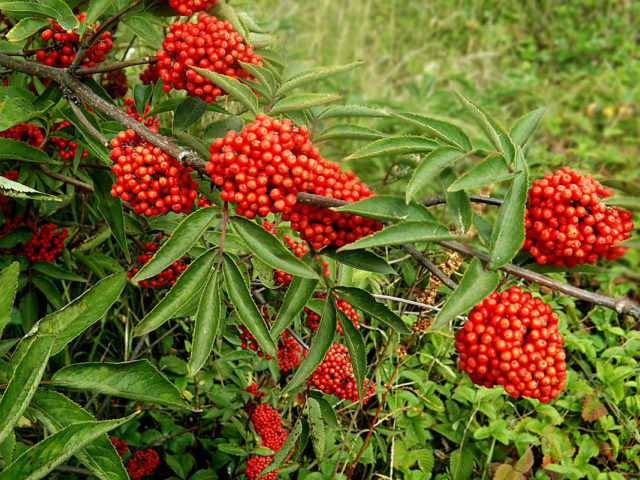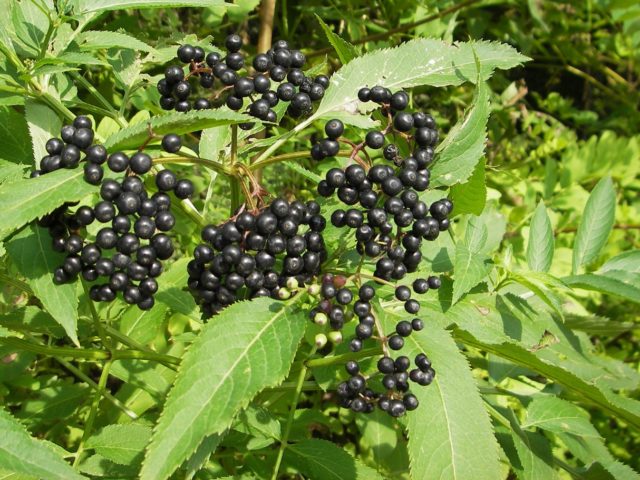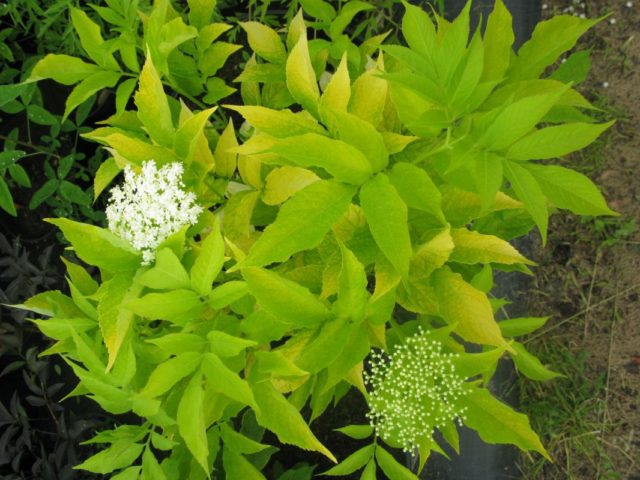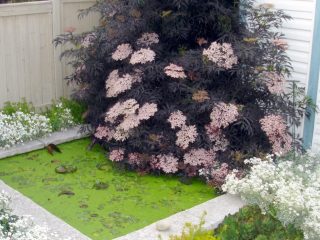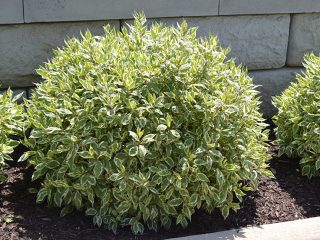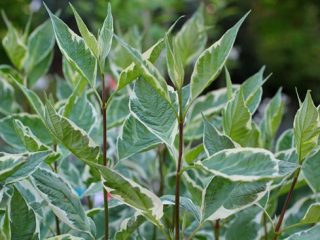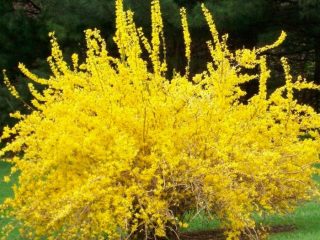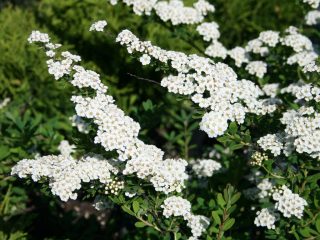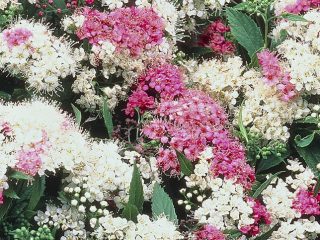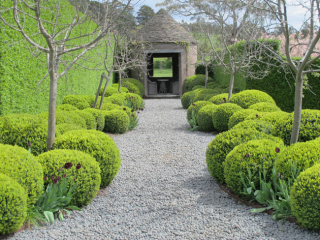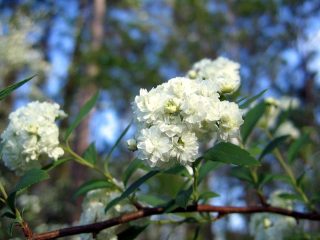Content
- 1 History of variety selection
- 2 Description of black elderberry Aurea
- 3 Characteristics of the variety
- 4 Planting and caring for black elderberry Aurea
- 5 How does elderberry reproduce?
- 6 The use of elderberry in landscape design
- 7 Diseases and pests, methods of control and prevention
- 8 Conclusion
- 9 Reviews
Black elderberry Aurea (Sambucus nigra, Solitaire) is a shrub plant used in landscape design: squares, parks, private areas. It is one of the twenty representatives of the species whose berries do not contain hydrocyanic acid and can be eaten.
History of variety selection
Black elderberry Aurea is an ornamental spreading tree whose historical homeland is North America. This is an independent non-selection variety, used in landscape design in the Russian Federation due to its exotic appearance and frost resistance, the fruits of the crop are used in the food industry.
Description of black elderberry Aurea
Elderberry grows in temperate and subtropical zones as a shrub or small spreading tree.The culture includes more than 15 species distributed throughout Russia, which include decorative forms of black-fruited representatives and shrubs with red berries.
One of the varieties in demand for cultivation is the black elderberry Aurea, shown in the photo. Characteristic features of deciduous shrubs:
- It reaches a height of 3 m, the main trunk is thick and dark brown, young shoots are light green. The dense, fast-growing crown resembles a dome and requires constant pruning to maintain its shape.
- The leaves of the plant are odd-pinnate, opposite, yellow in color, and become dark green by autumn. They belong to the complex category and have 6 leaves. In an elongated oval shape, reaching up to 25 cm. The edges are uneven with many well-defined teeth.
- The flowers are small, light beige in color, collected in paniculate inflorescences, and are formed in the upper part of the young shoots.
- The berries are a rich purple color closer to black, small with a diameter of up to 6 mm. The drupe fruit is edible only during biological ripeness.
Black elderberry is grown throughout the central zone, southern regions, and the North Caucasus.
A variety of chokeberry plumosa (pinnate structure) includes the Canadian elderberry Aurea (S. canadensis). Outwardly it looks like black, but there are also distinctive features:
- differs in height, Canadian is about 1 meter taller;
- the inflorescences are large, collected in umbrella-shaped flat panicles with a diameter of 20 cm;
- flowers are white, large;
- the crown is less dense;
- leaves are compound, consist of 7 leaves 30 cm long;
- purple fruits measuring 10 mm.
The culture has a specific pungent odor. It grows quickly and bears fruit at the age of 2 years.The Canadian elderberry variety is less resistant to low temperatures compared to the black Aurea.
The red-fruited representative of the elderberry species, the elderberry racemosa Aurea (Sambucus racemosa, Sambucus racemosa Plumosa Aurea), is grown only for the purpose of designing the territory:
- low-growing shrub (2–2.5 m) with a wide, oval, dense crown;
- the leaves are light green, changing color to bright yellow in autumn;
- Elderberry blooms in early May, after 14 days the bush is covered with scarlet clusters;
- fruits contain a high concentration of hydrocyanic acid;
- frost-resistant variety.
Red elderberry Aurea has a sharp, unpleasant odor that repels rodents and insects, so it is recommended to plant the plant near fruit trees and vegetable crops. For design purposes, it is well suited for border decoration and as a single plant. Does not have decorative varieties. It grows quickly, requires constant formation of the bush, and is demanding on watering. Unlike black-fruited representatives of the elderberry species, red plumosa Aurea is not cultivated on a commercial scale, since the fruits are unsuitable for human consumption.
It is found throughout Russia, except in regions with harsh winters.
Characteristics of the variety
The reason for the popularity of growing varieties of black elderberry is the plant’s unpretentiousness in care, exotic appearance, and gastronomic value of the fruit.
Drought resistance, frost resistance
A moisture-loving plant, needs periodic watering, drought resistance is average. Lack of water affects the size of the fruit and the density of the crown. The frost resistance of the variety has made it possible to grow black elder Aurea in areas with a temperate climate.If the temperature is expected to drop, it is recommended to insulate the root system. Frozen young shoots are completely restored in the spring. The minimum temperature for elderberry is -30 °C.
Productivity and fruiting
The photo shows the elderberry plumosa Aurea. This is a self-fertile crop, with peak yield occurring in the fifth year after planting. The number of berries from a bush is lower, from a tree is higher. On average, the following is collected from one crop:
Growth time (year) | Quantity per unit (kg) |
1 | 1 |
2 | 3 |
3 | 11 |
4 | 18 |
5 | 20 |
Elderberry ripens by mid-September.
The taste of black elderberry fruits is sweet and sour, with a bright, specific aroma. With prolonged drought, the berries lose their elasticity and become baked. The fruits of the black variety are well attached to the stalk; after ripening, they remain on the bush for a long time and do not fall off.
Area of application of fruits
Aurea black elderberry is immediately processed after harvesting; the crop is not stored. On the second day, the berries flow and fermentation begins. Transported over short distances in refrigerators at a temperature of +3 °C. Used in the food industry as a natural dye. Suitable for making wine, juice. Used in medicine. Compotes and jams are prepared at home.
Resistance to diseases and pests
The black elderberry variety Aurea is a representative of the wild and has strong immunity against diseases and pests. In rare cases, it is affected by a fungal infection.
Advantages and disadvantages of the variety
Characteristics of the advantages of the plant:
- bright, unusual appearance;
- increased productivity;
- immunity to disease and pests;
- frost-resistant, recovers after freezing;
- grows in one place for many years.
Disadvantages of the variety:
- average heat resistance,
- it is necessary to form a bush,
- has a specific smell,
- the berries do not lie and are poorly transported.
Planting and caring for black elderberry Aurea
No matter how unpretentious the black elder Aurea may be, cultivation and care are carried out in compliance with the rules of agricultural technology. To do this, you must follow the recommendations.
Recommended timing
The variety can be planted in the spring at the end of April, provided that the ground has warmed up. In autumn, early November. The terms are conditional - each climate zone has its own. The main requirement for autumn planting is that there should be 10 days left before the onset of frost, during which time the elderberry will have time to take root.
Choosing a suitable location
The black Aurea variety prefers illuminated places and also grows in the shade without visual changes in varietal characteristics. A self-fertile plant can grow alone, so pollinators are not taken into account when choosing a location. Soils are recommended: fertile, moist with neutral acid and alkali content.
Selection and preparation of seedlings
For spring planting, select annual seedlings with smooth light green bark. You also need to pay attention to the development of the root system. For autumn, planting material two years old is suitable. The root system should be free of dry fragments. Before placing in the ground, the cuttings of the variety are placed in a growth stimulator solution for 10 hours.
Landing algorithm
Sequencing:
- Prepare a planting hole with a diameter of 50*50 cm and a depth of 0.5 m.
- Top soil, about 4 buckets, is mixed with compost, urea (60 g), superphosphate (200 g).
- One bucket of the mixture is poured onto the bottom of the hole, wood ash is added, the elderberry roots are distributed, and covered with the rest of the soil.
- Water generously from above.
The root circle is mulched with peat.
Aftercare for elderberry
Once placed in the ground, elderberry requires little care:
- Watering is carried out in dry, hot weather twice a week.
- Mulching with compost will be sufficient; fertilizing is not needed.
- Pruning taking into account the end result - a tree or bush of various shapes.
- In the spring, weak dry branches are removed, the crown is cut in half from the existing length.
The formation of the bush is carried out every year. The variety does not need a garter, nor does it require shelter for the winter. The variety is rarely damaged by rodents; animals are repelled by the smell. For preventive purposes, it is recommended to place toxic preparations near the bush according to the instructions.
How does elderberry reproduce?
There are several ways to obtain elderberry plumosa Aurea:
- In October, after collecting the seeds, the planting material is sown on the prepared bed in furrows 3 cm deep. Cover it well, then in the spring the crop will sprout.
- By cuttings from the top of annual shoots. In mid-June, the material is placed in the ground for rooting.
- By layering.
Shoots from the mother bush are dug in and watered abundantly - by autumn they will take root.
The use of elderberry in landscape design
To decorate a plot, black elderberry varieties are used as a single shrub or as part of a composition. Aurea is used in the form of:
- color accents on blank walls;
- central part of the composition;
- hedges;
- background in design;
- focal spots;
- undergrowth for fruit trees;
- wind protection;
The elderberry variety Aurea is placed near resting areas - the smell of the plant repels insects from sanitary areas.
Diseases and pests, methods of control and prevention
The elderberry variety Aurea is practically not affected by diseases and pests. With rare exceptions, aphids are observed to spread to the tops of young shoots. For prevention purposes, elderberries are sprayed with Karbofos in early spring. In case of powdery mildew infection, it is recommended to treat with a fungicide.
Conclusion
Thanks to its spectacular appearance, black elderberry Aurea occupies a leading position in the design of plots. Due to the frost resistance of the variety, the plant can be grown throughout the Russian Federation. The culture has found application not only because of its beautiful crown, but also because of the biological quality of the fruit.


